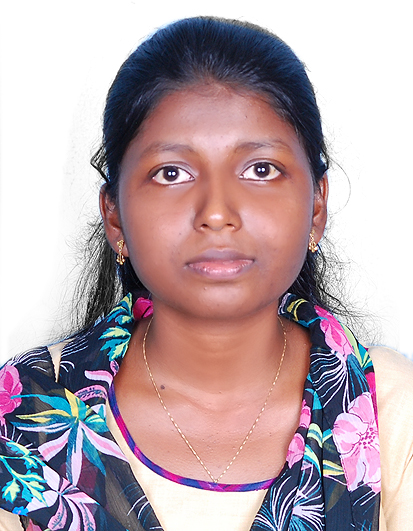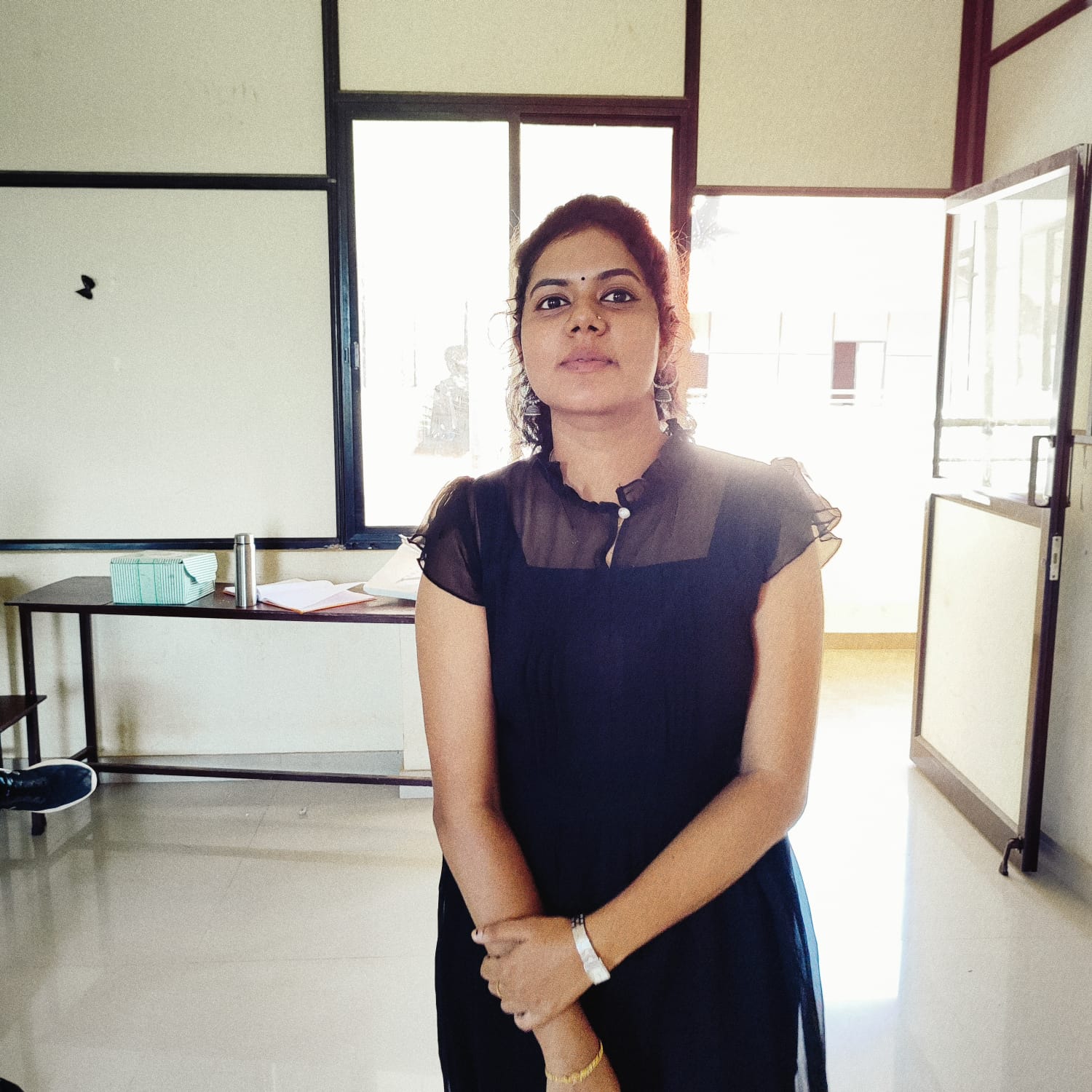Abstract
Traditional medicinal plants have long been a cornerstone of drug development, offering a rich source of bioactive compounds. With increasing concerns over side effects and resistance to conventional drugs, plant-based medicines are gaining renewed attention in healthcare. Canthium angustifolium Roxb., a member of the Rubiaceae family, is widely used in folk medicine under various regional names, such as Kattakara and Koyikkodavam. Due to its therapeutic potential, it has been utilized extensively in traditional medicine for conditions like inflammation, infections, and digestive disorders. Significant potential anti-inflammatory and antioxidant activity has been demonstrated by the plant leaf extract. This study aims to provide a current and comprehensive overview of Canthium angustifolium Roxb., covering its phytochemistry, pharmacology profile, and summary of traditional and therapeutic uses
Keywords
Plant based medicine, Canthium angustifolium Roxb., Therapeutic potential, Anti-inflammatory, Antioxidant activity, Phytochemistry, Pharmacology profile.
Introduction
Rubiaceae, commonly known as the coffee, madder, or bedstraw family, is a diverse group of flowering plants that includes terrestrial trees, shrubs, lianas, and herbs. Members of this family are characterized by their sympetalous actinomorphic flowers, simple opposite leaves, and interpetiolar stipules. Features such as simple, entire, opposite or whorled leaves, tubular sympetalous corollas, and an inferior ovary make the Rubiaceae family easily recognizable as a cohesive morphological group. Within this family lies the genus Canthium, which includes a variety of flowering plants that typically grow as shrubs or small trees. These plants often exhibit thorny stems and deciduous leaves, adapting to diverse environments. Among them is Canthium angustifolium Roxb., or narrow-leaved Canthium, a species endemic to southern tropical Asia. This large shrub is distributed across eastern India, including Assam, as well as Bangladesh and Myanmar (formerly Burma). Canthium angustifolium Roxb. thrives predominantly in wet tropical habitats of the Indian subcontinent, reflecting its ecological specialization. Depending on its location, this species is known by various vernacular names, with the most common being Kattakara, Kattaramullu, and Koyikodavam. Its adaptability and local significance highlight its ecological and cultural value within its native range.
Taxonomy Of Canthium Angustifolium ROXB. [7,8]
Kingdom: Plantae
Phylum: Tracheophyta
Class: Magnoliopsida
Order: Gentianales
Family: Rubiaceae
Genus: Canthium
Species: angustifolium
Plant Description [7,8]
Usually measuring between 2 and 5 cm in length, the leaves are small to medium in size, lanceolate, and narrow. They have a green exterior that is smooth or somewhat glossy, and the underside is frequently lighter in hue with veins visible. Along the stem, the leaves are arranged oppositely; occasionally, the short internodes give the leaves a clustered appearance. Although they can occasionally seem a little wavy, the margins are typically complete and smooth. These water-saving leaves, which are adapted to dry bushveld conditions, frequently have a waxy cuticle or are smaller in size to reduce water loss.
Canthium angustifolium Roxb.has a thin, stiff, and frequently prickly stem with pale to dark brown bark that can become smooth or slightly rough with age. Younger stems are pliable and green, but older stems get tougher and more-woody. The branching of the plant is complex and dense, creating a sprawling or bushy shape. The thorns are sharp, modified branches that act as a defense mechanism against herbivores. The stems are essential for supporting the small fruits and narrow leaves, which helps the plant thrive in arid bushveld conditions.
The dry, bushveld environment of Canthium angustifolium is well suited to its roots. Because they are usually strong and deep, the plant can get water from deeper soil layers when there is a prolonged dry spell. Initially fibrous near the surface, the root system develops into a robust, taproot-like structure that offers stability and anchoring. By storing water and nutrients, these roots help the plant survive and become drought-resistant. Additionally, the vast root system aids in halting soil erosion in its natural habitat.
The tiny, inconspicuous, tubular flowers typically have a diameter of less than 5 mm. They are carried along the branches or at the leaf axils in tiny clusters, or cymes, and range in colour from creamy white to pale greenish. Simple in structure, usually with five petals, the flowers have a subtle, occasionally sweet scent that draws pollinators like bees and other insects. In order to ensure ideal conditions for pollination and the subsequent development of fruit, the blooming period frequently falls during the rainy season.
The fruits are tiny, ovoid to spherical drupes that usually have a diameter of 5 to 10 mm. When immature, they are green, and when they ripen, they turn dark purple to black. The fruits are typically borne alone or in tiny clusters along the branches, and the surface is smooth. The endocarp, a hard, single-seeded stone, is enclosed in a fleshy, slightly juicy outer layer in every fruit. Birds and other wildlife use these fruits as a valuable food source, which helps spread the plant's seeds.
Pharmacognostical And Phytochemical Studies [6,9,10]
Canthium angustifolium Roxb. exhibits distinct pharmacognostic features, beginning with the macroscopic and microscopic characteristics of its leaves. The leaves are lanceolate, ranging from 4.5-9 cm in length and 2-4 cm in width, with a polished, taper-pointed appearance. In younger shoots, the leaves are arranged oppositely, while older branches bear fascicled leaves with short petioles. A transverse section of the leaf reveals a dorsiventral structure, with a central midrib containing vascular tissues. The outer cuticle, composed of cutin, chitin, suberin, and cellulose, serves as a protective barrier. Beneath the cuticle, the epidermis consists of cylindrical to oval cells, with stomata more abundant on the lower surface. The vascular bundle is arranged in a collateral manner, with xylem above and phloem below. Beneath the phloem, sclerenchymatous cells appear, and the upper epidermis is followed by closely arranged palisade cells. Spongy parenchyma fills the lower layers of the leaf, aiding in photosynthesis.
Microscopic examination of powdered leaf material reveals fragments of xylem vessels, epidermal cells, starch grains, trichomes, and starch prisms. These microscopic features, in combination with the macroscopic traits, assist in the identification and authentication of the plant. The physicochemical analysis of the leaves shows a total ash content of 5.736%, with a minimal acid-insoluble ash value of 0.94%, indicating low impurities. The water-soluble ash content is 5.31%, while the alcohol-soluble extractive value is 3.834%, and the water-soluble extractive value is 4.88%. The loss on drying is 11.704%, typical of plant materials. Phytochemical screening reveals a wide range of bioactive compounds in Canthium angustifolium Roxb., with alkaloids and saponins present in all solvent extracts. Flavonoids, steroids, phenols, and tannins are found in most solvent systems, except petroleum ether. There is significant variation in the concentration of phytochemicals depending on the solvent used. The water extract contains the highest levels of phenols, tannins, and flavonoids, while the chloroform extract has the highest saponin content. Alkaloids are most abundant in the petroleum ether extract, followed by water, and steroids are concentrated in chloroform, followed by methanol and water. Various qualitative chemical tests confirm the presence of phenols, tannins, flavonoids, saponins, alkaloids, terpenoids, glycosides, quinones, fatty acids, and steroids, with solvent-specific variations in effectiveness.
Table 1: Quantitative estimation of phytoconstituents of C. angustifolium
|
Phytochemical
|
Chloroform
|
Methanol
|
Water
|
Petroleum ether
|
|
Phenols (mg GAE/g extract)
|
59.08±0.44
|
12.09±0.37
|
83.56±0.25
|
-
|
|
Tannins (Tannic acid mg/ml)
|
89.16±0.30
|
49.22±0.29
|
90.86±0.30
|
-
|
|
Flavonoids (QE/g)
|
36.50±0.33
|
25.63±0.29
|
45.41±0.24
|
-
|
|
Saponins (µg/mg)
|
239.85±0.24
|
235.6±0.38
|
115.6±0.71
|
112.1±0.29
|
|
Alkaloids(µg/mg)
|
25.11±0.25
|
22.33±0.27
|
72.33±0.31
|
98.44±0.34
|
|
Steroids (mg/100g)
|
70.13±0.31
|
24.85±0.40
|
10.82±0.18
|
-
|
Thin Layer Chromatography (TLC) analysis of the total ethanolic extract (TEE) reveals multiple spots corresponding to alkaloids, flavonoids, tannins, and phenolics, reinforcing the diverse chemical profile of the plant. These findings highlight the importance of selecting the appropriate solvent for extracting specific bioactive compounds from Canthium angustifolium Roxb. The results also underscore the variability in phytochemical concentrations based on the solvent used.
Pharmacological Studies
- Anti-Inflammatory Activity [6,11-14]
The total ethanolic extract of Canthium angustifolium Roxb. Leaves was evaluated for its anti-inflammatory activity using two commonly employed experimental models: carrageenan-induced paw oedema and cotton pellet granuloma. The extract exhibited significant anti-inflammatory effects in a dose-dependent manner. Its higher dose produced a more pronounced anti-inflammatory response, comparable to that of the standard drug dexamethasone and more effective than the lower dose. In the carrageenan-induced paw oedema model, the extract effectively reduced swelling, an effect attributed to its inhibition of prostaglandins and other inflammatory mediators.
Table 2: Anti-inflammatory activity study using carrageenan induced paw oedema model
|
Treatment
|
Mean paw oedema volume in M±SEM
|
Percentage inhibition
|
|
0 hr
|
1 hr
|
2 hr
|
3 hr
|
1 hr
|
2 hr
|
3 hr
|
|
Control
|
0.85 ±0.0226
|
1.6± 0.03651
|
1.767±0.03333
|
1.883± 0.03073
|
- -
|
- -
|
- -
|
|
Diclofenac (10mg/kg)
|
0.85 ±0.0226
|
1.333±0.07032
|
1.117±0.05456
|
0.8833±0.03073
|
39.33
|
62.583
|
96.776
|
|
Low dose (200mg/kg)
|
0.85 ±0.0226
|
1.483 ±0.07032
|
1.333±0.08433
|
1.083 ±0.07032
|
15.6
|
39.028
|
80.744
|
|
High dose (400mg/kg)
|
0.85 ±0.0226
|
1.4 ±0.04472
|
1.15±0.05627
|
1.033±0.06146
|
26.667
|
58.985
|
85.585
|
Similarly, in the cotton pellet granuloma model, the extract demonstrated a substantial reduction in the weight of the pellets, indicating its ability to suppress both transudative and proliferative components of chronic inflammation. Furthermore, the extract inhibited leukocyte migration, providing additional evidence of its anti-inflammatory properties. These results suggest that Canthium angustifolium may serve as a potent natural alternative for managing inflammatory conditions.
Table 3: Effect of TEE on weight of granuloma in cotton pellet inserted animals
|
Group
|
Wet weight (g)
|
% Inhibition
|
Dry weight (g)
|
% Inhibition
|
|
Control
|
0.289±0.01076
|
-
|
0.09833±0.00833
|
-
|
|
Dexamethasone treated
|
0.1788±0.003525
|
38.1314
|
0.045±0.00224
|
54.23
|
|
Low dose (200mg/kg)
|
0.2633±0.01764
|
8.89
|
0.0733±0.00882
|
25.45
|
|
High dose (400mg/kg)
|
0.2083±0.00833
|
25.45
|
0.055±0.00428
|
44.065
|
- Anti-Oxidant Activity [9,15]
The antioxidant activity of Canthium angustifolium Roxb. was assessed through the phytochemical analysis of its leaf extracts in various solvents, including petroleum ether, chloroform, methanol, and water. The qualitative analysis revealed the presence of several active principles such as alkaloids, glycosides, flavonoids, terpenoids, phenols, fatty acids, quinones, saponins, steroids, and tannins. The quantitative analysis showed significant amounts of phenols, flavonoids, alkaloids, tannins, saponins, and steroids, with methanol and water extracts exhibiting the strongest antioxidant properties. The antioxidant activity was evaluated using the DPPH and FRAP assays, showing that the water and methanol extracts had the most pronounced inhibitory effects, likely due to their higher content of saponins, tannins, and phenols.
Table 4. Percentage inhibition of different extracts of Canthium angustifolium with ascorbic acid as standard
|
|
Percentage Inhibition
|
|
Conc. (?g/ml)
|
Ascorbic acid
|
PE
|
CHL
|
MeOH
|
H2O
|
|
1.56
|
6.0
|
1.05
|
2.28
|
1.78
|
1.74
|
|
3.12
|
6.8
|
10.38
|
6.21
|
2.98
|
7.70
|
|
6.25
|
12.2
|
13.58
|
8.94
|
5.61
|
12.97
|
|
12.5
|
25.0
|
17.01
|
13.83
|
9.60
|
12.38
|
|
25
|
48.7
|
19.32
|
18.84
|
19.34
|
19.09
|
|
50
|
93.0
|
20.32
|
21.22
|
25.38
|
23.63
|
|
100
|
93.2
|
24.20
|
22.98
|
33.78
|
40.99
|
|
200
|
93.5
|
24.69
|
24.83
|
46.16
|
58.99
|
|
400
|
93.2
|
28.72
|
28.37
|
65.23
|
65.25
|
|
800
|
93.2
|
32.94
|
32.27
|
68.91
|
68.91
|
|
1000
|
93.2
|
36.82
|
36.52
|
82.26
|
78.10
|
These phytochemicals contribute to the plant's potential as a source of antioxidants, with saponins playing a key role due to their free radical scavenging abilities. The study highlights that methanolic and aqueous extracts of Canthium angustifolium Roxb. possess significant antioxidant activity, supporting their medicinal potential. The findings suggest that this plant could be a promising candidate for the development of antioxidant-rich therapeutic agents, with methanol and chloroform extracts serving as viable and economically efficient options.
CONCLUSION
This literature review demonstrates the considerable therapeutic potential of Canthium angustifolium Roxb. with its diverse bioactive compounds, particularly in its anti-inflammatory and antioxidant properties. Phytochemical studies have confirmed the presence of key bioactive molecules, including alkaloids, saponins, flavonoids, and phenols, which contribute to its efficacy in managing various health conditions. The significant anti-inflammatory effects observed in experimental models, along with its potent antioxidant activity, highlight the plant's promising role in addressing chronic diseases, such as inflammation-related disorders and oxidative stress. These results provide credence to the ongoing investigation of Canthium angustifolium as a possible source of new therapeutic compounds, especially in the creation of plant-based, natural medications with few adverse effects. To completely comprehend its pharmacological profile and confirm its effectiveness in applications related to human health, more clinical and preclinical research is essential.
REFERENCES
- Britannica, The Editors of Encyclopaedia “Rubiaceae”, Encyclopedia Britannica, Chicago, 2020 https://www.brita nnica.com/plant/Rubiaceae.
- Martins D, Nunez CV. Secondary Metabolites from Rubiaceae Species. Molecules. 2015; 20(7):13422-13495.
- Bridson, D. M. (1992). The Genus Canthium (Rubiaceae: Vanguerieae) in Tropical Africa. Kew Bulletin, 47(3), 353–401.
- M.S. Savinaya, S.P. Sangamesh, J. Narayana, V. Krishna, Traditional medicine knowledge and diversity of medicinal plants in Sharavathi valley region of central western ghats, International -journal of herbal medicine, Vol. 4, No. 6, 124- 130, 2016.
- S.K. Patro, D. Sasmal, P.M. Mazumndar, P.D. Behera, U.R. Lal, S.K. Dash, K.R. Padhy, Review on genus Canthium: special reference to Canthium coromandelicum- an unexplored traditional medicinal plant of Indian subcontinent, American journal of phytomedicine and clinical therapeutics, Vol. 2, No. 6, 796-813, 2014.
- Joseph Tchamgoue, Yvan Romuald W Tchokokam, Alain WEMBE Ngouonpe, Yvan Anderson Ngandjui Tchangoue, Laure M Tiani, Titus Alfred Makudali Msagati, Bonaventure T Ngadjui, Ivan Robert Green, Simeon F Kouam. The genus Canthium: A comprehensive summary on its traditional use, photochemistry, and pharmacological activities. Fitoterapia. 2023;172(3) :105754.
- Sankara Rao, K., Deepak Kumar (2024). India Flora Online. http://indiafloraonline-ces.iisc.ac.in/plants.php?name=Canthium angustifolium.
- Plants Of The World Online, Canthium angustifolium Roxb, https://powo.science.kew.org/taxon/urn:lsid:ipni.org:names:745310-1.
- Soja. S, T. Sunilkumar (2024). Phytochemical Composition and Evaluation of Antioxidant Activity in Canthium angustifolium Roxb. Advances in Zoology and Botany, 12(1), 26 - 32. DOI: 10.13189/azb.2024.120103.
- Bindu AR et al., Pharmacognostical and Phytochemical Studies on Canthium Angustifolium Roxb Leaves. American Journal of Pharmacy & Health Research 2014.
- Nikhila Mary George P., Bindu A. R., Anti-Inflammatory Activity Of Canthium Angustifolium Roxb Leaves By Carrageenan Induced Paw Oedema And Cotton Pellet Granuloma Method, Int. J. of Pharm. Sci., 2024, Vol 2, Issue 4, 688-693.
- Mukesh R, Thirath K, Parmar N. Evaluation of anti-inflammatory potential of Kigelia pinnata leaf extract in wistar rats. Asian J Pharm Clin Res, 2012, 5(1), 95-97.
- Rahman H, Eswaraiah MC. Vakati K. In vitro and in vivo anti-inflammatory activity of Aquilaria agallocha oil. IJBMSP, 2012, 2(1), 7-10.
- K.N Mishra et al., Evaluation of anti-inflammatory and dose selection of Mollugo pentaphylla using cotton pellet induced granuloma in rats. Int.J.Pharm.& Health Sci., 2010, 1(3), 155-172.
- S. Nishaa, M. Vishnupriya, J.M. Sasikumar, H.P. Christabel, Antioxidant activity of ethanolic extract of Maranta arundinacea L. tuberous rhizomes, Asian Journal of Pharmaceutical and Clinical Research, Vol. 5, No. 4, 85-88, 2012.
- G.E. Trease, W.C. Evans, Pharmacognosy, 15th Edition, Elsevier publishers, Amsterdam, 2002
- U. Quattrocchi, CRC World Dictionary of Plant Names, Boca Raton, New York, Washington DC, London: CRC Press Vol. 1, 2000.
- Roxburgh W, Carey W. Flora Indica or prescriptions of Indian plant, Volume 2. Sesampore: mission press; 1824:169-170.


 Elizabeth M Abraham*
Elizabeth M Abraham*
 Abhirami V. R.
Abhirami V. R.
 Devika Gopan
Devika Gopan
 Lakshmi Nandana M R
Lakshmi Nandana M R
 Parvathy S. S.
Parvathy S. S.
 Samna Salim
Samna Salim
 10.5281/zenodo.14711871
10.5281/zenodo.14711871